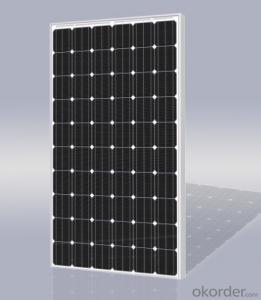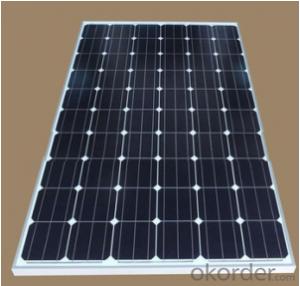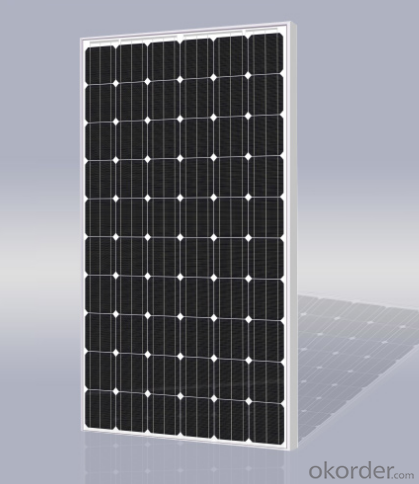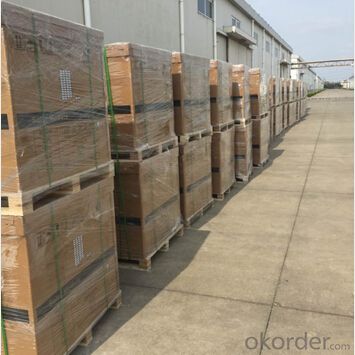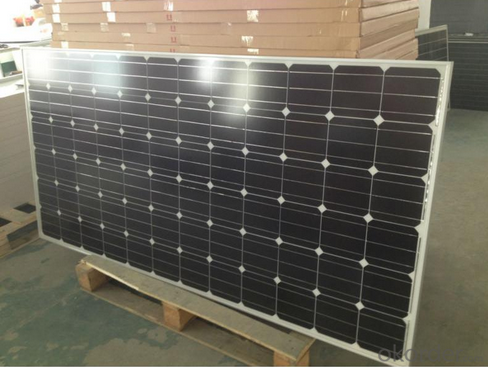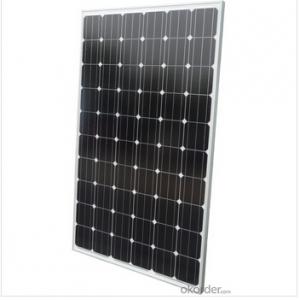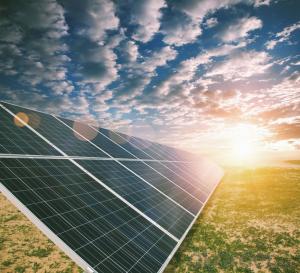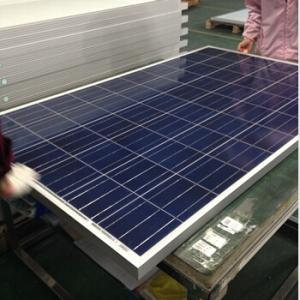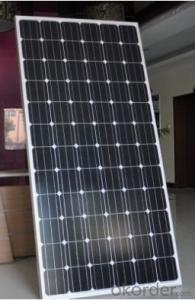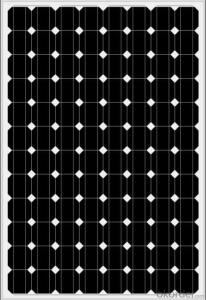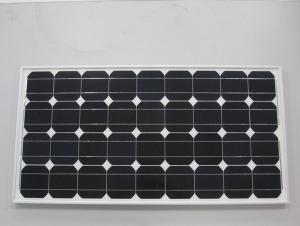Six Flags Magic Mountain Solar Panels - Monocrystalline Solar Panels for 260W Series
- Loading Port:
- Shanghai
- Payment Terms:
- TT or LC
- Min Order Qty:
- 6500 watt
- Supply Capability:
- 40000000 watt/month
OKorder Service Pledge
OKorder Financial Service
You Might Also Like
1.Structure of Monocrystalline Solar Module for 260W Series
Monocrystalline Solar Module for 260W l : High efficiency crystalline solar cell. Even if under the weak light, the solar module can produce maximum power output.
II Tempered glass (toughened glass): Anti-reflecting coating and high transmission rate glass increase the power output and mechanical strength of solar module.
III EVA and TPT: Using high quality EVA and TPT to prevent destroying and water.
IV AI frame: Without screw, rner connection. 6 holes on the frame can be installed easily.
V Junction box: Multi function junction box with water proof.
VI Long lifetime: ≥25 years; Less power decrease.
VII Good performance of preventing from atrocious weather such as wind and hails.
VIII Resisting moisture and etching effectively, not effected by geology.
IX The certificate issued by international authority: UL, TUV, IEC, CE.
2. Standard Test Conditions of Monocrystalline Silicon Solar Panel:
The opto-electrical specifications shown below are stabilized values being measured at Standard Test Conditions, Irradiance: 1000W/m2, Spectrum: AM1.5 at 25°C, The info below is subject to manufacturing tolerances. Where appropriate minutes of measurement are available and are used for the dimensioning of the installation.
Advantages of Monocrystalline Silicon Solar Panel
• CNBM Solar performance guarantees for 25 years
• 12 years guarantee for workmanship
• Timeliness of delivery
• Quality Products certified (TÜV, UL, CE, ISO)
3. Solar Panel Images
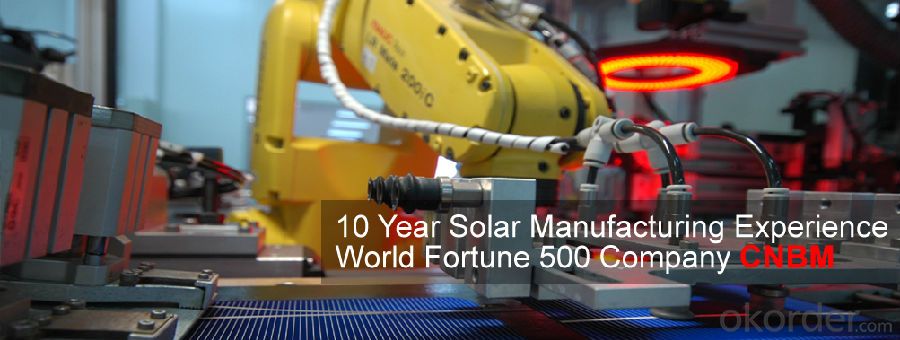
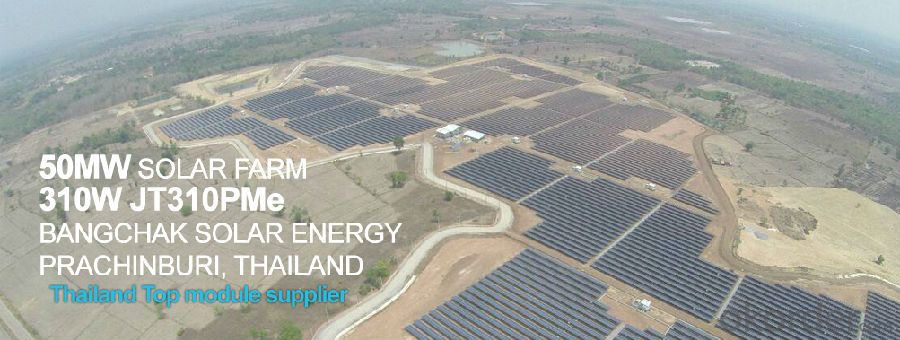
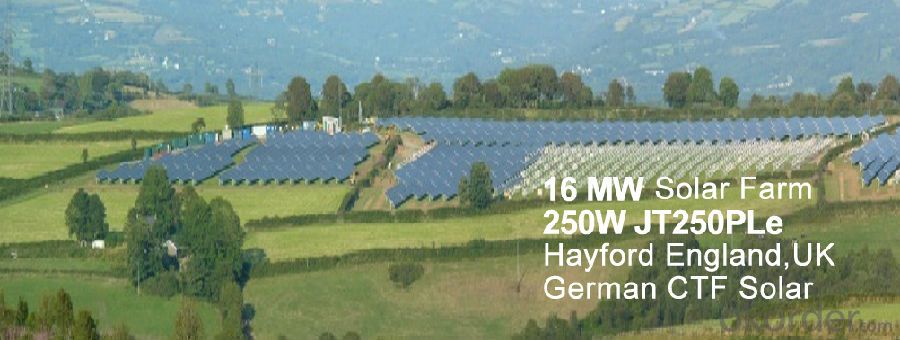

4. Solar Panel Specification
Characteristics

Temperature Coefficient of Cells

Mechanical Data

Limits

Guarantees

IV Curve
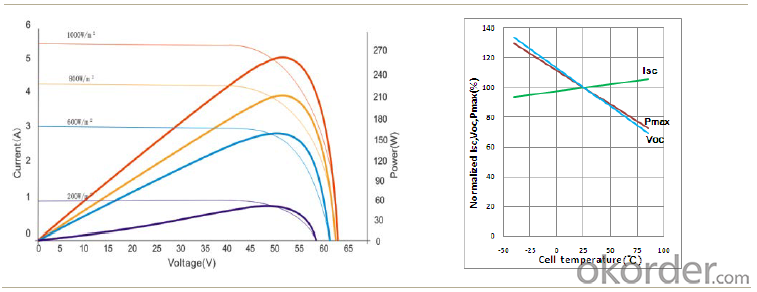
5.Quality certification and certificate
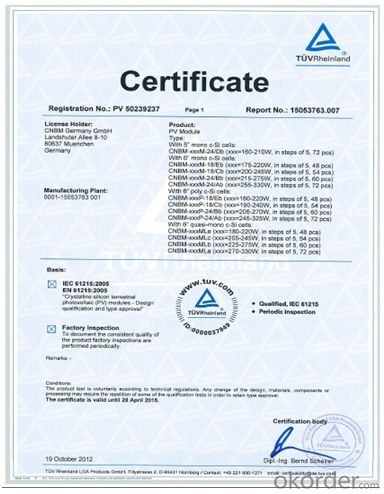
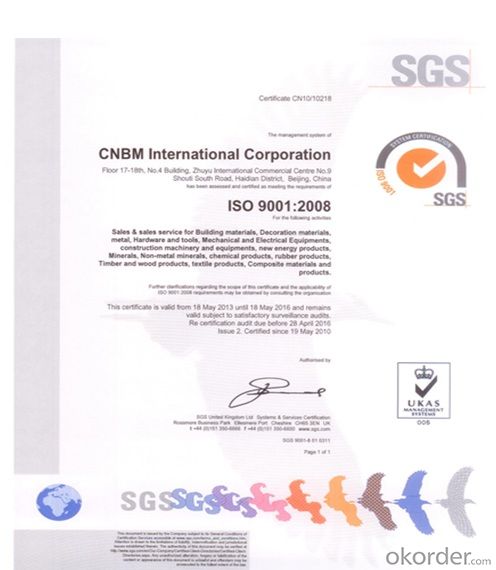
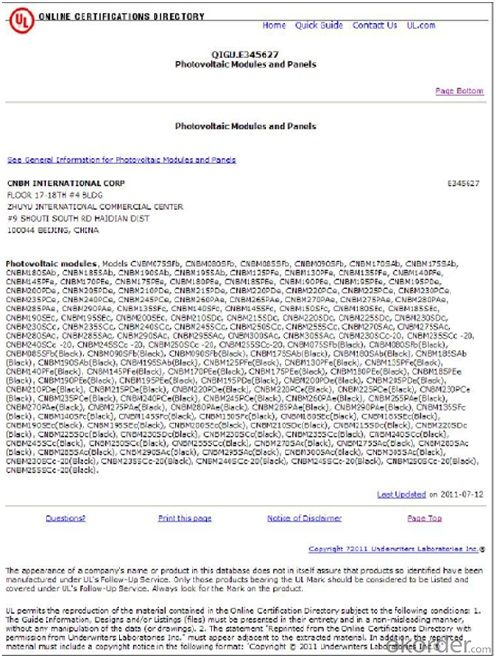
6.FAQ
We have organized several common questions for our clients,may help you sincerely:
①How about your company?
CNBM Solar photovoltaic (PV) Panel has various wattage from 1.5W to 315W to meet the demand of every customer. It is the optimal choice for both on-grid and off-grid power systems. CNBM Solar panel offers high performance of power warranty and good after sale service, we have professional people to reply your problem anytime.
CNBM International Corporation's products including Monocrystalline Solar Panel, Polycrystalline Solar Panel have received and enjoyed famous reputation in many countries and regions in the world .As a solar panel supplier in China, we strive to provide our customers with excellent service, superior products and unmatched value.
②How to guarantee the quality of the products?
CNBM Solar performance guarantees for 25 years
• 12 years guarantee for workmanship
• Timeliness of delivery
• Quality Products certified (TÜV, UL, CE, ISO)
③How long can we receive the product after purchase?
In the purchase of product within three working days, We will arrange the factory delivery as soon as possible. The pecific time of receiving is related to the state and position of customers.Commonly 7 to 10 working days can be served.
- Q: Can solar panels be used in areas with high humidity?
- Yes, solar panels can be used in areas with high humidity. However, high humidity levels can affect the overall efficiency of solar panels due to a decrease in their performance. The moisture in the air can cause a film of dirt or dust to accumulate on the panels, reducing their ability to absorb sunlight effectively. Regular cleaning and maintenance can help mitigate these effects and ensure optimal performance.
- Q: So lets say that Everyday I use ,280 kWh. How many 250 watt solar panels would I buy so that I don't need to buy electricity anymore. Sorry if this sounds stupid, I am doing research on why american homes should become more cost efficient.
- Everyday I use ,280 kWh 280 kW-hour / 24 hours = 470 kW WOW, that is a very high power level, most homes use an average of .2 kW. My guess is that you mean you use 280 kW-hour in a year, which comes to an average power of .3 kW, typical. Assuming you get, worse case, 6 hours of sun per day, for the first case, 470 kW, each solar panel generates the equivalent of 250 x6/24 = 60 watts, so you would need 470k/60 = 8000 panels For the second case, .3 kw or 300 watts, divided by 60 that is about 20 panels. Depending on where you live, you could need as much as twice that number. Plus you need charge controller, lots of expensive batteries, and an inverter. The big problem is periods of no sun. If you demand continuous power, and you have a period of, say, 24 hours with no sun because of storms, etc, then the number of batteries increases to the hundreds.
- Q: I want to know that if I put solar panels in space if Pluto can recieve energy for iPods and television
- Yes. Not practical, but possible. Solar cells actually work best at low temperatures. At a little under W/m^2, it'd take a large solar panel to generate enough power for a TV (several tens to hundreds of Watts are needed). And, no offense meant, what TV programs do you think you'll be watching? You sound kind of stupid....
- Q: Can solar panels be installed on a theme park or amusement park?
- Yes, solar panels can be installed on a theme park or amusement park. In fact, many theme parks around the world have already installed solar panels to generate clean and renewable energy. This not only helps to reduce their carbon footprint and dependence on fossil fuels but also saves them money on electricity bills in the long run. Additionally, solar panels can be integrated into the design of the park, complementing its aesthetic appeal and showcasing the park's commitment to sustainability.
- Q: I have a cabin in the woods and need more light. I do have enough sun but I was wondering how or where do I get a solar panel to lead to a power outlet? In a perfect world I would like to get a solar panel with a connecting wire to an outlet or something so I could power a small TV. I know its hard enough but can I get that pre-made? Or even lastly should I look at wind power consider I would like this to be under $500? Thank you for putting up with this bundle of questions.
- A typical solar panel will deliver 50 watts of power in the form of 24 volts DC. You need 20 volts AC. So here is what it takes: Since you will need at least 200 watts to do a small TV, you need four solar panels, and a solar controller. Then you need a 24 volt solar type battery to load the output of the panels. Next you need an inverter. This is a device that changes 24 volts DC into 20 volts AC, which you can wire to a standard outlet for the TV set. Solar panels cost around $6 per watt of power. 200 X $6 = $200 Solar Controller will cost around $50 The battery will cost around $00 The inverter will cost around $200 You could get by with less than 200 watts of solar panels if you just let it charge the battery all day and only use the TV for an hour or two in the evening with the TV running on the inverter which is powered by the battery. The link is for a similar system ready to go. Wind is not a viable option.
- Q: Can solar panels be used for powering electric boats or marine vessels?
- Yes, solar panels can be used to power electric boats or marine vessels. Solar panels are a sustainable and efficient source of energy that can be used to charge the batteries of electric boats, providing a clean and renewable power source for propulsion. This helps reduce dependence on fossil fuels and minimizes the environmental impact of marine transportation.
- Q: I mean when light hits the solar panel where does the energy go and what does it become? Be specific.
- image voltaic panels take the ability from the sunlight's easy this is extra extreme than say a easy bulb and utilising the chemical homes of (i think that's a silicon and carbon based fabric) the fabric to rework the easy(yet no longer warmth) into electric powered ability. it could basically use very particular wavelengths this is why image voltaic cells are nowhere close to useful. oo i forgot the 2nd area that's maximum suitable to place nevertheless status cells to the place they are going to receive easy the final public of the day (distinctly the early afternoon) and that's as direct as achievable. so some distance as business form cells they are fastened on structures which turn them by way of fact the sunlight strikes around the sky so as that they receive the main direct achievable easy
- Q: i have a fountain system that has a small electric pump. its made to be close to a house but i want it across the driveway and i dont want to run electrical over there.is there a small solar panel that i can get fairly inexpensive to mount on a nearby tree and be able to plug the pump into it?
- You will need more than a small solar panel to run a pump continuously, unless you don't mind that the pump only comes on during the day while the sun is out. st you need to know what the power demands are of the pump in question. Not only do you need to know the rate of the power draw from the pump, but you will also have to calculate how much power the pump will draw from your solar system every day. You will have to factor in that the sun doesn't shine brightly every day, of course there's also night, so you will need a storage battery, charging system to go along with your solar panel. Now most pumps like the one you described are 20vac. Most solar panels, the batteries, the chargers are 2vdc. In order to get 20vac you will need an inverter. Once again, you will have to make sure that the inverter you get can handle the demands of the pump. A solar system that actually works for you takes some carefull planning, it's not something that you can just hang from a tree. None of what I just descibed will be inexpensive by my definition, so if it were me, I'd dig a trench across the driveway, install some direct bury cable on a GFCI circuit out of my main power panel save a bundle.
- Q: i've heard environmentalists like ed begley jr use the phrase quot;peak shaving hourswhen talking about solar energy.what does that phrase mean, please?thank you to all who respond.
- Graminoids are among the most versatile life forms. They became widespread toward the end of the Cretaceous period, and fossilized dinosaur dung (coprolites) have been found containing phytoliths of a variety that include grasses that are related to modern rice and bamboo. Grasses have adapted to conditions in lush rain forests, dry deserts, cold mountains and even intertidal habitats, and are now the most widespread plant type; grass is a valuable source of food and energy for all sorts of wildlife and organics. Graminoids are the dominant vegetation in many habitats, including grassland, salt-marsh, reedswamp and steppes. They also occur as a smaller part of the vegetation in almost every other terrestrial habitat. There are some 3,500 species of graminoids. Many types of animals eat grass as their main source of food, and are called graminivores – these include cattle, sheep, horses, rabbits and many invertebrates, such as grasshoppers and the caterpillars of many brown butterflies. Grasses are also eaten by omnivorous or even occasionally by primarily carnivorous animals. In the study of ecological communities, herbaceous plants are divided into graminoids and forbs, which are herbaceous dicotyledons, mostly with broad leaves.
- Q: Can solar panels be installed on a deck or patio?
- Yes, solar panels can be installed on a deck or patio. However, it is important to consider certain factors such as the structural integrity of the deck or patio, the amount of sunlight it receives, and any regulations or restrictions in your area. Additionally, it is recommended to consult with a professional installer to ensure proper installation and maximize the efficiency of the solar panels.
Send your message to us
Six Flags Magic Mountain Solar Panels - Monocrystalline Solar Panels for 260W Series
- Loading Port:
- Shanghai
- Payment Terms:
- TT or LC
- Min Order Qty:
- 6500 watt
- Supply Capability:
- 40000000 watt/month
OKorder Service Pledge
OKorder Financial Service
Similar products
Hot products
Hot Searches
Related keywords
